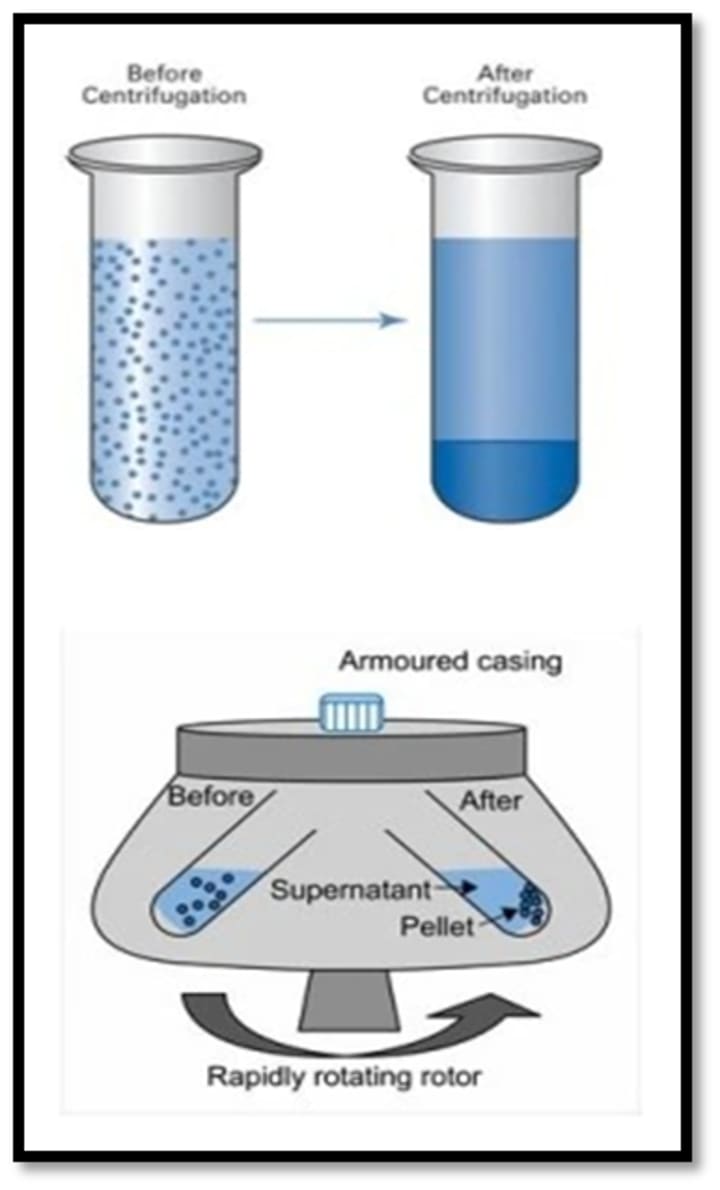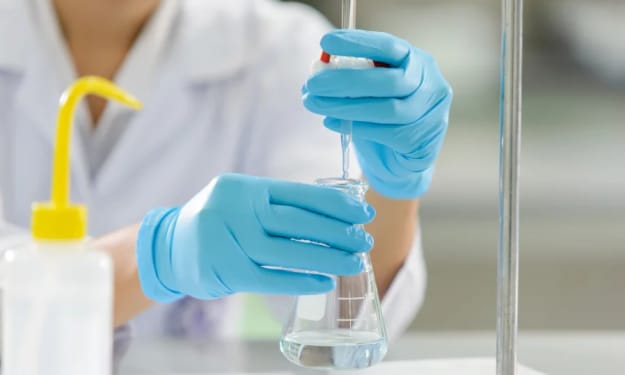Centrifugation.
Introduction, Principle, method and its uses.

Centrifugation
Separating mixture components using centrifugal force is known as centrifugation.
Introduction:
Because different components of a mixture have varying densities, centrifugation is a widely used technique in many scientific and industrial domains to separate the components of a mixture. To achieve effective separation, it uses the centrifugal force principle.
1. Centrifugation Principle:
Centrifugation is based on the centrifugal force principle, which is the outward force felt by an object revolving around a central axis. The denser components travel to the outer regions of the spinning container when a combination is rapidly spun in a centrifuge, while the lighter components stay near the centre. The separation of mixture components is possible because to this differential settling based on density.
2. Centrifugation Method: The centrifugation method entails the following crucial steps:
a. Sample Preparation: To prepare the combination to be separated, the components are either homogenized or suspended in an appropriate liquid medium to form a homogenous solution or suspension.
Loading the Sample: To prevent sample loss or damage during centrifugation, the prepared sample is carefully deposited into centrifuge tubes or rotor chambers, making sure that it is evenly distributed and balanced.
c. Centrifugation: The loaded samples are inserted into an apparatus that rapidly rotates. The components undergo outward forces as the centrifuge accelerates, which causes them to separate based on variations in densities.
After centrifugation, the components are divided into discrete layers or pellets, which are then collected. Using a variety of methods, including pipetting, decanting, or draining the supernatant, these fractions are carefully collected.

Centrifuge kinds: There are various centrifuge types, each with a unique design and set of uses. Typical types include:
Ultracentrifuges are used to separate macromolecules and particles, such as proteins, DNA, and subcellular components. They are high-speed centrifuges. They are capable of achieving spinning rates that frequently exceed 100,000 rpm.
b. Microcentrifuges: In molecular biology and clinical laboratories, these small centrifuges are frequently employed. They are appropriate for tiny sample quantities and run at slower speeds than ultracentrifuges.
c. Refrigerated Centrifuges: These centrifuges have cooling systems to keep their operating temperatures low. They are utilized in applications that call for samples that are temperature-sensitive, such biological materials.
d. Preparative Centrifuges: These centrifuges are employed often in industrial operations and are created for large-scale separations. They are capable of handling higher throughputs and bigger sample volumes.
4. The Uses of Centrifugation: Centrifugation is used in a variety of fields, such as:
a. Centrifugation is essential for separating biomolecules like proteins, enzymes, and nucleic acids from complicated mixtures in biotechnology. It helps with the separation and analysis of various components for use in research, diagnosis, and treatment.
b. Pharmaceutical Industry: Centrifugation is essential for the production of pharmaceuticals and is used to separate active pharmaceutical ingredients (APIs), clarify cell cultures, and purge medication formulations of contaminants.
Environmental Analysis: In environmental samples, centrifugation is used to separate and concentrate contaminants, sediments, and microorganisms. It supports investigations into air pollution, soil contamination, and water quality.
d. Food and Beverage Industry: Centrifugation is used to process a variety of foods and drinks, including dairy products, oils, and fruit juices. It facilitates liquid clarification, desired component concentration, and solid-liquid separation.

Consequently, centrifugation is a flexible method that To sum up, centrifugation is an effective method for separating mixture components based on differences in density. It allows for the effective separation of diverse compounds in a variety of scientific and industrial applications by utilizing centrifugal force.
The food and beverage sector, biotechnology, pharmaceuticals, environmental analysis, and other industries all use centrifugation in various ways. It is essential for processing food and drink items, purifying medications, analyzing environmental samples, and isolating biomolecules.
In industrial processes, quality control, and scientific research, centrifugation is still extremely important. Its adaptability and efficacy make it a priceless instrument for separating and analyzing mixtures, advancing research in numerous domains.
Overall, the separation of components in mixes has been revolutionized by centrifugation, allowing scientists and other industry experts to obtain pure materials, research intricate systems, and create novel products. Centrifugation techniques are anticipated to advance further with continued technological developments, resulting in even more precise and effective separation procedures in the future.
About the Creator
Enjoyed the story? Support the Creator.
Subscribe for free to receive all their stories in your feed. You could also pledge your support or give them a one-off tip, letting them know you appreciate their work.





Comments
There are no comments for this story
Be the first to respond and start the conversation.